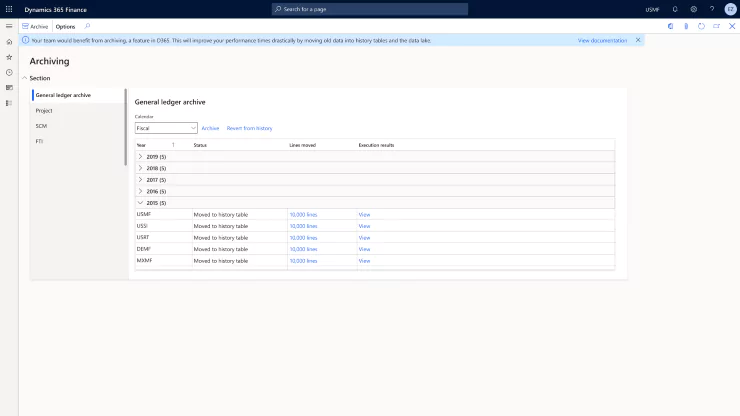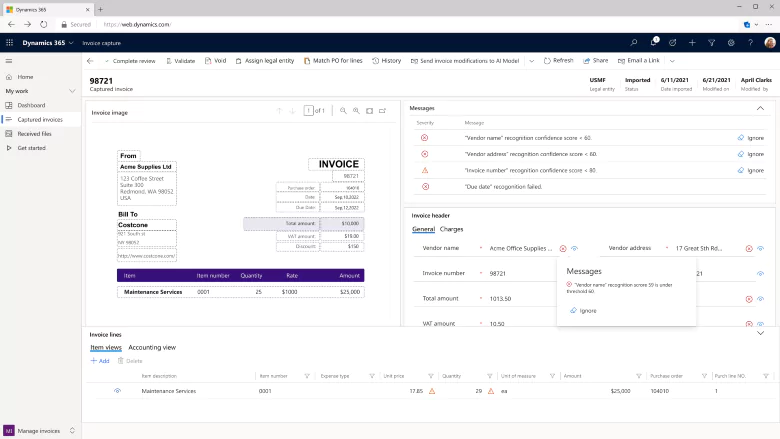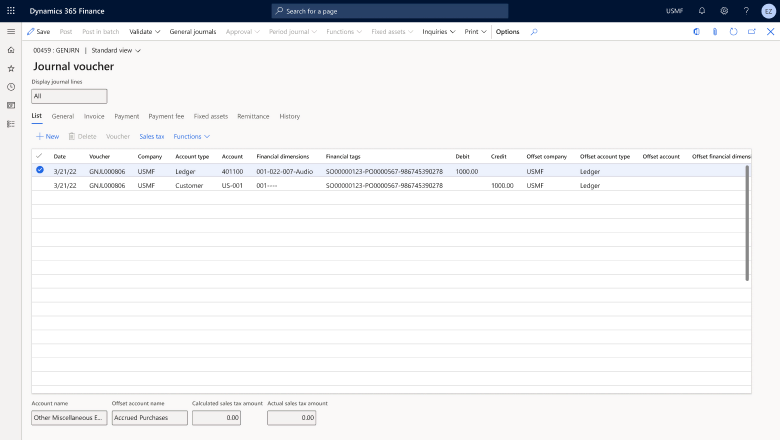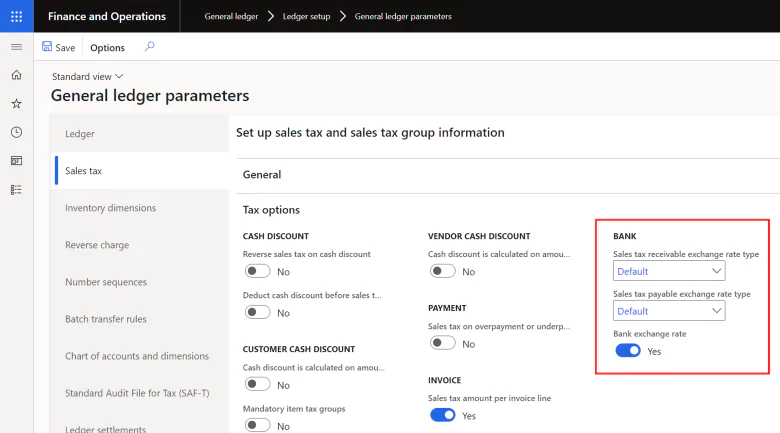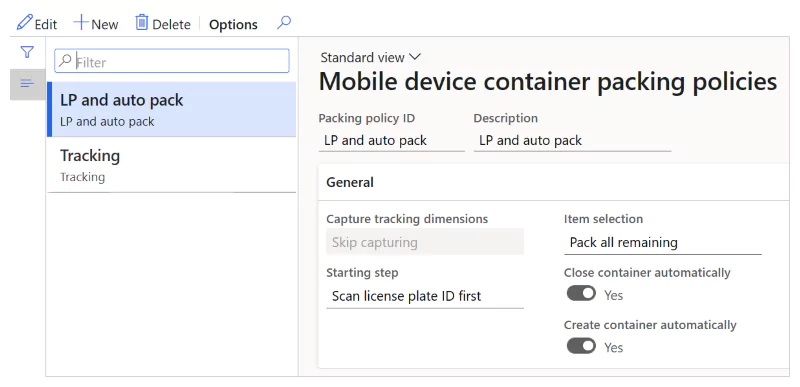Discover the 2023 release wave 1 plans for Dynamics 365 Finance & Operations
Microsoft Dynamics 365 Finance and Operations applications, comprised of Finance and Supply Chain Management, are powerful cloud-based enterprise resource planning (ERP) systems. Microsoft released the 2023 release wave 1 plans for these two powerful systems. In this post, we will highlight key updates and new features that users can expect to be released from April 2023 to September 2023 for the following applications:
Dynamics 365 Finance
Archive data
In the 2023 release wave 1, Microsoft released a new feature that enables users to save storage space and gain performance in Dynamics 365 Finance. Users can archive data in Dynamics 365 using automation. The data will move consistently, safely, and securely to the data archive. Then, users can continue to report and analyze historical data with standard reporting.
Calculate gain/loss during ledger settlements
In Dynamics 365 Finance, if the accounting currency is in balance for matched transactions in ledger settlement, no realized gain/loss is posted if the reporting currency doesn’t balance to zero. In September 2023, a new feature will address this gap by posting a gain/loss in the reporting currency if the accounting currency is in balance. This feature will help accountants speed up period-end close by eliminating the need to first post the gain/loss in the reporting currency. Other scenarios will be added in future release waves where gains and losses can also be posted for the accounting currency. Additionally, partial settlement will be supported in a future release.
Automated invoice processing
Dynamics 365 Finance’s invoice capture provides continuous intelligent automation with reading and recognition of vendor invoices. In the 2022 release wave 1, Microsoft released functionality that provides users with an out-of-the-box solution for capturing and processing purchase order invoices. In the latest release, 2023 wave 1, Microsoft expanded this feature to include non-PO invoices and vendor invoice journals. Additionally, enhancements to automation were made to reduce background processing so accounts payables staff can focus their attention on other tasks. This release includes the following updates:
- Accounts payable fully automated – Continued enhancements around matching, and additional capabilities around non-purchase order invoices and vendor invoice journals were added so users can have a full accounts payable automation solution.
- Process vendor invoices during import – This feature saves time and effort for accounts payable clerks by processing vendor invoices automatically when they are imported.
- Process free text invoices faster – In this release, Microsoft has included more enhancements to improve processes so users can experience faster and higher-volume processing of free text invoices.
Track transaction data with financial tags
In the 2023 release wave 1 of Dynamics 365 Finance, Microsoft will introduce financial tags as an alternative to financial dimensions for tracking transaction-specific data such as document numbers and master data. Users can define up to 20 financial tags, which will be stored on accounting entries in the general ledger. In the initial release, financial tags will be available in the General journal and Global general journal. Future releases will incorporate financial tags into more transactions and processes, including:
- Ledger settlement – Financial tags will be available for ledger settlement to provide more matching options. For example, users can create a financial tag to track payment references, making it easier to match transactions.
- Financial journals – In the first 2023 release wave, financial tags will be available on commonly used financial journals such as customer and vendor payment journals. Microsoft plans to add financial tags to additional financial journals and documents in future releases.
Enhance business insights with performance analytics
In the 2023 release wave 1 of Dynamics 365 Finance, Microsoft will implement enhancements to business performance analytics.
- Record to report and procure to pay data model – In this release, financial and non-financial data and metadata are brought into Dataverse and transformed into analytical tables enabling users to build data models and relationships between ledgers and documents from multiple sources. Then, with the full power of Excel and Power BI, users will be able to access the data they need to generate transaction-level reports without support from developers.
- Reporting hub and base reports on data – The reporting hub is a central repository of preconfigured reports that are organized by business process. This will allow more users to create reports than was previously possible.
- Enhanced security – Row and role-level security capabilities ensure the data model is available to the users in your organization that need access to specific features and reports. For example, you can send a sales report to sales staff in the field that refreshes with the most current sales number but is restricted to a specific product and location.
Improvements to the globalization studio
In the 2023 release wave 1, Microsoft continues to enhance the Globalization Studio to provide for more globalization breadth, depth, and scalability out of the box. In this release, users will receive new features such as the ability to enable additional exchange rate types for tax currency conversions and the ability to withhold tax calculation during invoice.
Currently, D365 Finance only allows for the tax amount calculation that is based on the transaction currency. In this release, Microsoft provides additional tax-specific exchange rate types and converts a transaction currency amount into the tax currency amount directly. Additionally, a new feature will be released to enable users to withhold tax calculation during invoice. With this feature, a new withholding tax button can be used to temporarily withhold tax transactions. The withholding tax amount is estimated on the purchase order and the vendor invoice so that the user can validate the withholding tax setup prior to payment.
Dynamics 365 Supply Chain Management
Planning Optimization add-in fully automated
Microsoft previously introduced Planning Optimization, the planning service, which replaces the deprecated planning engine for master planning. In this release, Microsoft continues to enhance Planning Optimization to support many manufacturing planning features that were previously only supported by the older deprecated planning engine. With the addition of these features, most manufacturers will be able to move to Planning Optimization to start taking advantage of its significant performance improvements. In this release, Planning Optimization now supports the following manufacturing capabilities:
- Bill of material (BOM) lines with multiples or rounding factors – With this feature, users can set up bills of materials where some components are part of a grouped component, bag, bottle, or similar.
- BOM lines with negative quantity – This release fully supports BOM lines with negative quantities, which means that users can now register co-products or by-products.
- Scheduling with explosion of production orders – This release lets users schedule production orders with explosion, so they can view all sub-production orders, on-hand inventory, and transfers related to the sales order demand.
- Release production orders with a scheduled start date earlier than today – With this release, each production order will keep both its expected completed date and its actual start date. Previously, if a production order was delayed, Planning Optimization would assume that it would be completed the same day.
Archiving sales orders and inventory transactions
Companies typically generate and store many sales orders and sales order lines as well as inventory transactions. These records may not be necessary for day-to-day operation but they do provide value for historical reporting, auditing, and machine learning. However, keeping a large volume of these records in the working environment can cause a variety of issues such as increased storage costs and impacts on system performance and usability. In the 2023 release wave 1, organizations can leverage a new data archival feature. With this feature, administrators can set up logical rules to control when and how records will be archived from the SCM database to the Dataverse managed data lake. The data will then remain available for historical reporting, auditing, legal claims, machine learning, and other purposes.
Prospect-to-cash integration with Dynamics 365 Sales
In the 2023 release wave 1 of Dynamics 365 Supply Chain Management, Microsoft will release several important improvements to the prospect-to-cash scenario which is enabled through an integration with Dynamics 365 Sales. Previously, this integration only allowed sales quotations and sales orders to be created in isolation and important pricing features such as manual discounts were not fully supported. This release addresses these issues as well as others by adding support for the following capabilities:
- Sales quotation and sales order line pricing are more transparent and solid
- Support for the crediting process to cover sales credit notes with respect to negative charges and discounts
- Support for sales quotation revisioning and state transitions to ensure that sales quotation processing flows seamlessly between D365 SCM and D365 Sales
Improvements to the Inventory Visibility add-in
Microsoft has added several new features to the Inventory Visibility add-in in the 2023 release wave 1, including:
- Soft reservations from sales orders – Users can now make soft reservations directly from sales orders in Supply Chain Management to prevent double-booking or overselling across multiple order channels.
- Three-month available-to-promise (ATP) calculations – The maximum time fence for the Inventory Visibility Add-in ATP feature has been extended from seven days to three months, providing better visibility into future inventory statuses and order-promising capacity.
- Improved user experience – The user interface for Inventory Visibility has been expanded to support basic configuration and new functional operations. Users can view and update inventory information directly, improving the efficiency of stock inquiries.
- Near real-time inventory insights – A new dashboard is available to view inventory quantity and status across data sources, legal entities, locations, and channels with a quick overview. The dashboard helps logistics managers investigate KPIs and take action quickly.
Warehouse management enhancements
The latest release wave of Dynamics 365 includes several enhancements to the warehouse management system, making it easier to implement, optimize, and maintain. Some of the new features include:
- Tiered approach for internal movements – The warehouse management system now has a new tiered approach to handle batch and serial tracked items, improving internal movement tracking and management.
- Faster and more resilient packing – The Warehouse Management mobile app now allows warehouse workers to pack and close the last container in a shipment without waiting for the back-end system to process a sales packing slip. This speeds up the packing process and makes it more resilient.
- Optimized mobile device layout – The Warehouse Management mobile app now features optimized screen layouts that make better use of product images, helping to guide picking activities and increase worker efficiency.
- Improved implementation and maintenance – New tools and capabilities are available to help warehouse managers set up, monitor, troubleshoot, and maintain their warehouse management system.
- Process optimization – With new optimization tools, warehouse managers can now monitor warehouse quality, efficiency, and productivity to manage their warehouse management system more effectively.
Attribute-based pricing
In the 2023 release wave 1 of Dynamics 365 Supply Chain Management, Microsoft will release a new attribute-based omnichannel pricing feature that supports B2B companies moving to an omnichannel sales strategy to sell directly to customers. This enables managers to effectively plan and manage omnichannel selling prices by setting attributes on customer, product, and order segments. This new feature leverages the Commerce Scale Unit (CSU) core feature of D365 SCM to enable B2B companies to:
- Manage and calculate pricing in one central location and provide transparent pricing across all channels
- Calculate prices quickly while considering a wide range of business factors
- Create pricing models based on product pricing differentiators, order types, and customer segments
- Manage complex pricing structures with price component breakdowns
- Leverage enhanced discount budget control to avoid margin leakage from fund consumption
Want to learn more?
The updates above are just a few of the enhancements and new features planned for Dynamics 365 Finance and Operations this wave. If you want to review more updates, you can view Microsoft’s official release plan documentation for Dynamics 365 Finance and Dynamics 365 Supply Chain Management. Additionally, you can work with a certified Microsoft partner for assistance in reviewing and highlighting the features most important to your operations. The right Dynamics 365 partner can also provide training for users to optimize these new features and enhancements.

